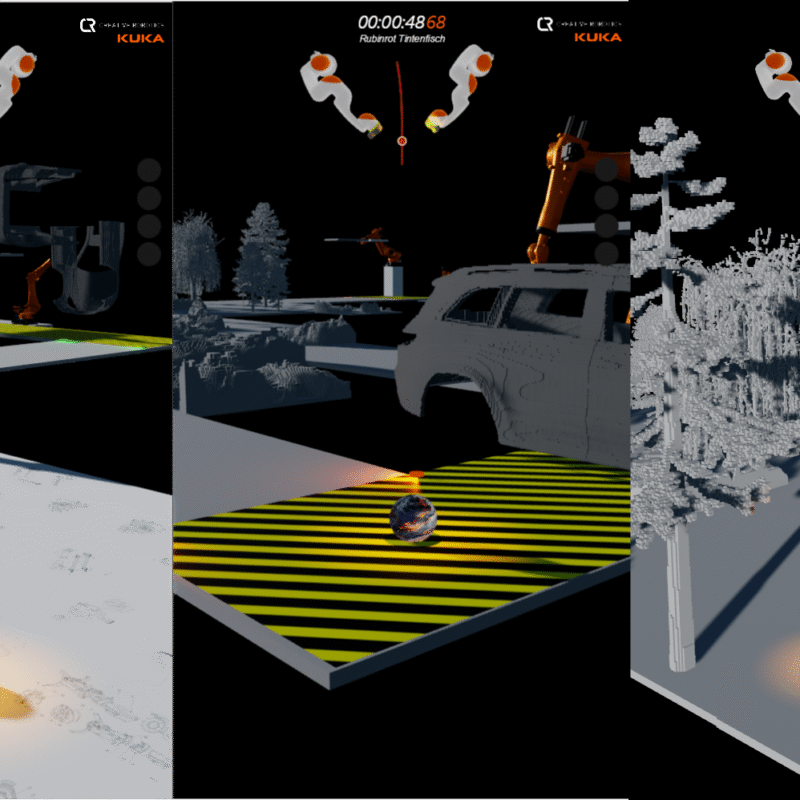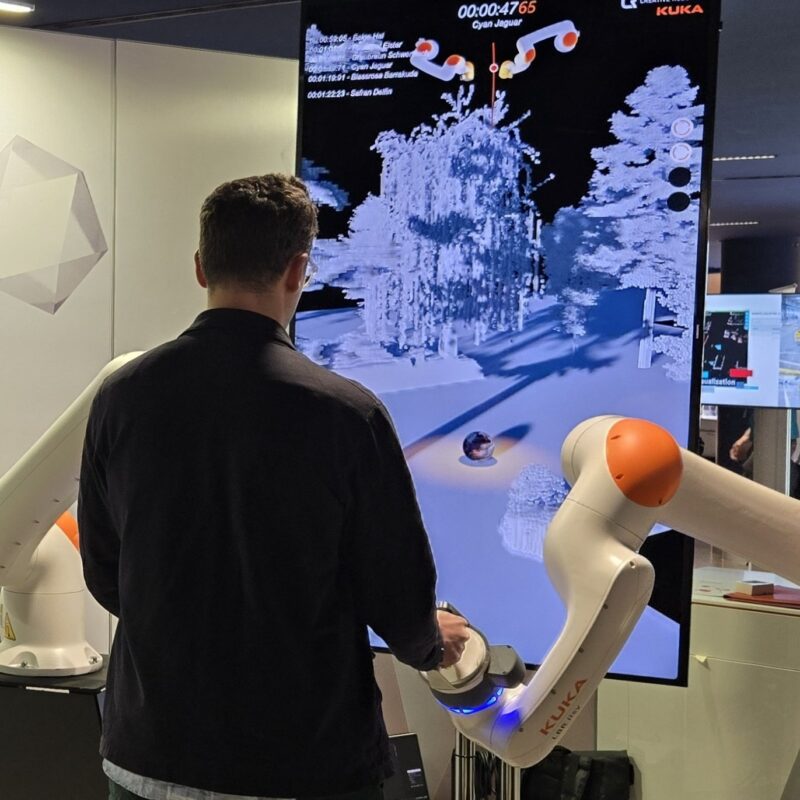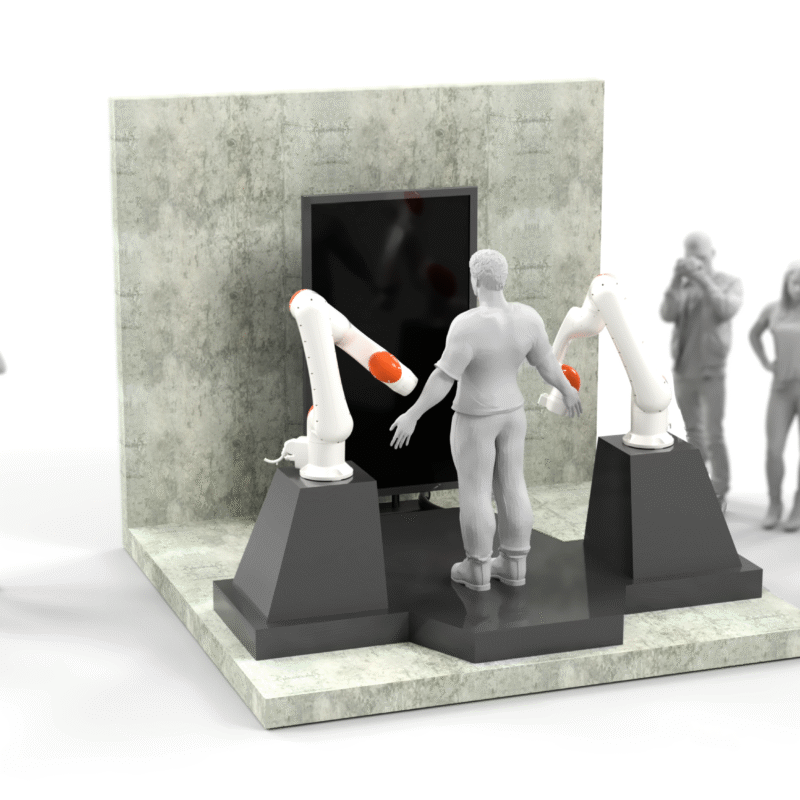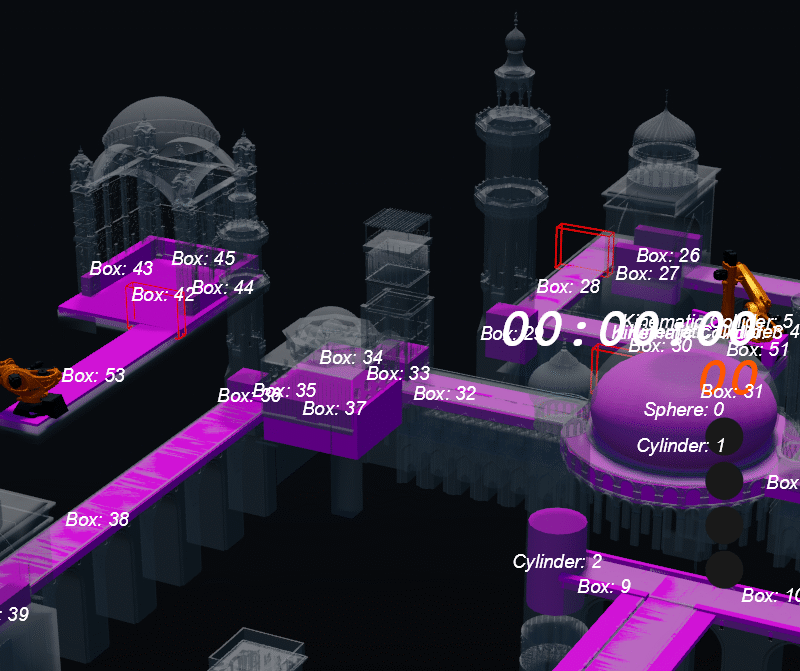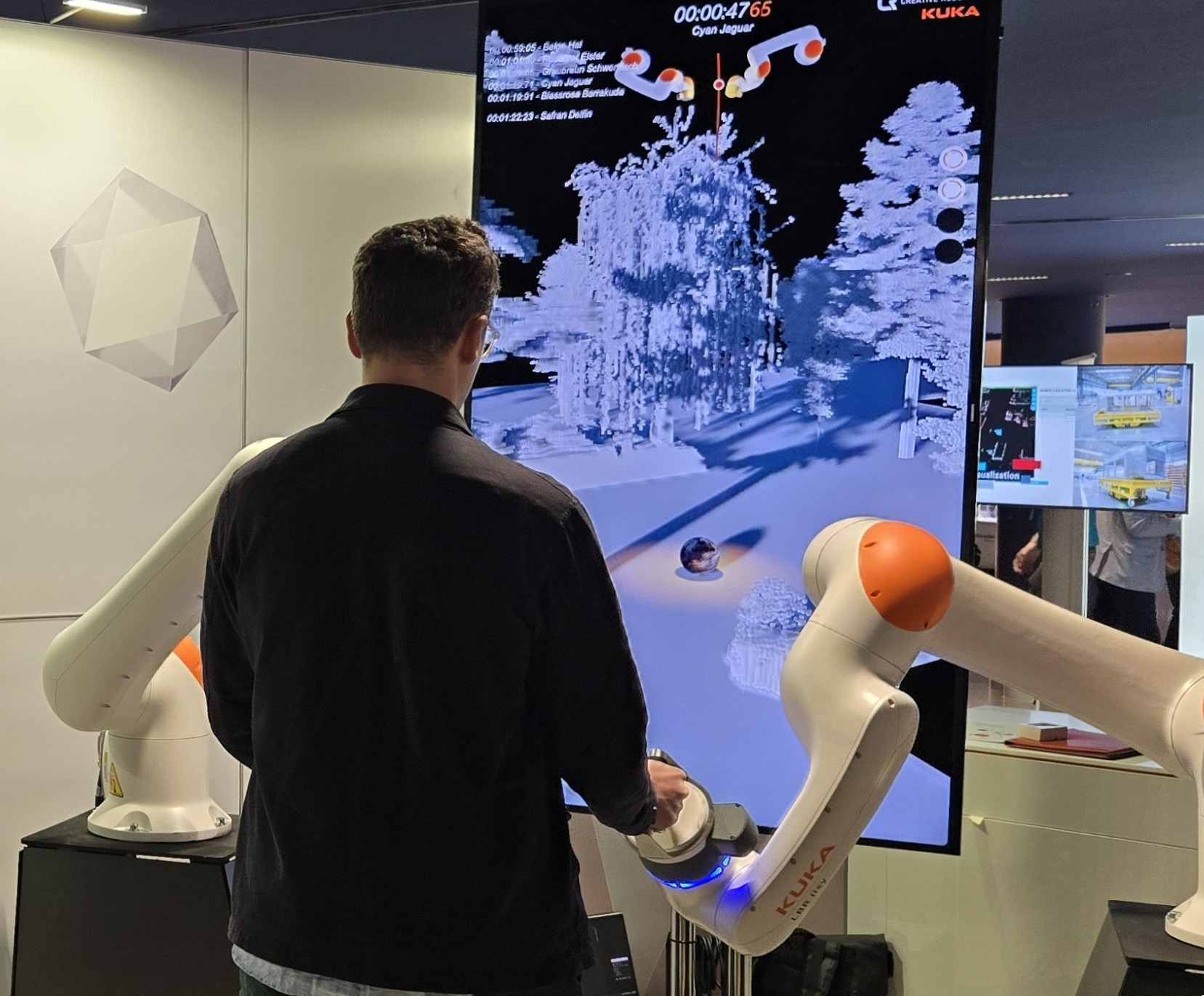
Immersion
What does it feel like to interact with a robot not as a tool, but as a partner in play?
Immersion is an interactive installation that invites participants to guide a virtual sphere through a 3D landscape using two collaborative robotic arms. Inspired by the 1980s arcade classic Marble Madness, the project transforms industrial machines into embodied game controllers, blurring the boundaries between control, expression, and calibration.
But Immersion isn’t just about games. It’s about rethinking how we learn and adapt to machines. Instead of tutorials or training, the installation allows users to discover how to move with the robot through action itself. As people focus on completing the level, they simultaneously negotiate the robot’s behaviour—its resistance, compliance, and latency often without even realising it. We call this layered process parallel interaction: the simultaneous adaptation to a task and to the system that mediates it.
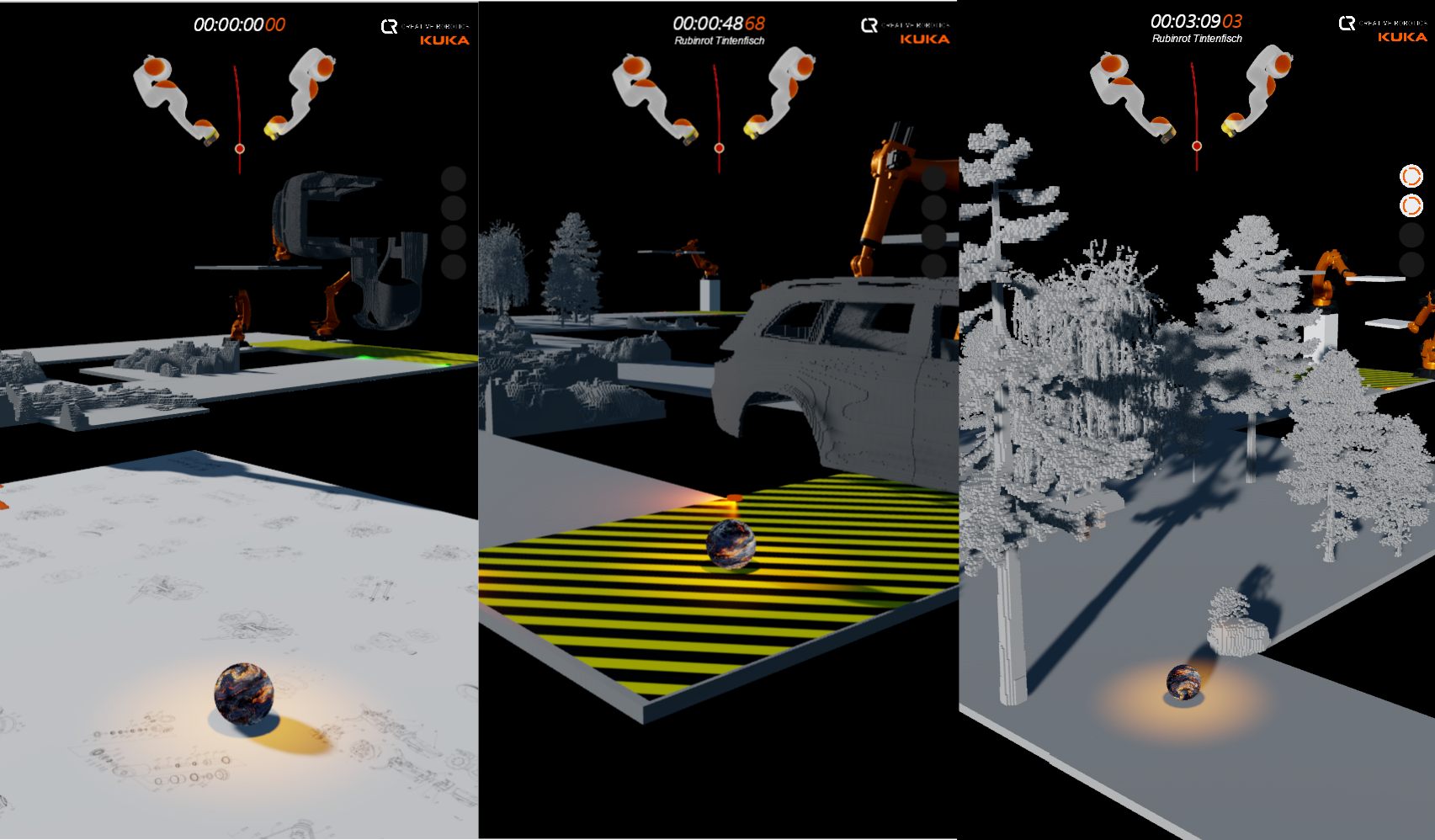
Developed with two KUKA LBR iisy robots and a custom real-time control system built in vvvv gamma, Immersion fuses game mechanics, real-time physics, and physical interaction design. Each game level reflects the site it’s exhibited in—from architectural arches in Abu Dhabi to automotive motifs in Stuttgart—offering a speculative reinterpretation of context through play.
At its core, Immersion is an experiment in embodied learning. What happens when a machine’s logic is revealed not through manuals, but through movement? What if calibration doesn’t feel like work but like a game?
Presented at the European Robotics Forum 2025, Immersion welcomed over 70 participants. Feedback highlighted its intuitive control scheme, playful aesthetic, and surprising sense of responsiveness even when the robot didn’t behave quite as expected.
As we continue exploring how robots can be more than tools—how they can become aesthetic, interpretive, and affective interfaces—_Immersion_ offers a glimpse into new modes of interaction: ones where learning emerges through doing, and where dialogue happens not in language, but in movement.
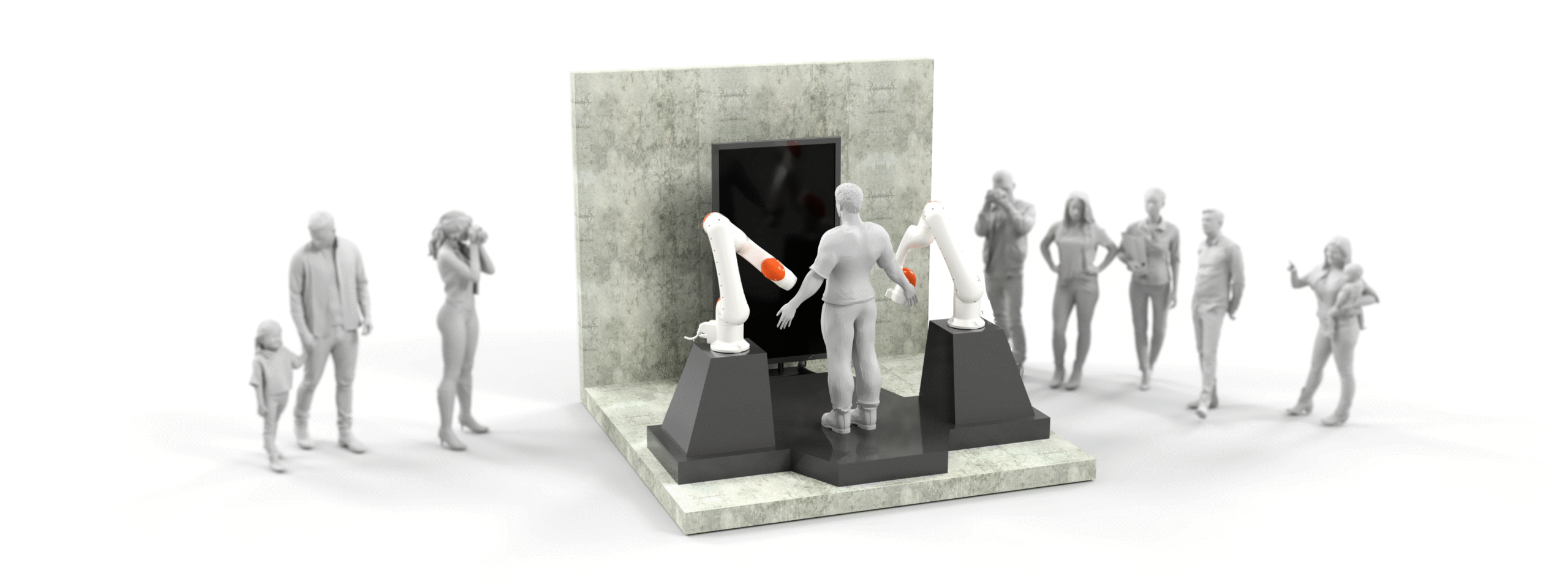
Credits:
Amir Bastan, Johannes Braumann – Creative Robotics, Linz, Austria
Andrea Herold, KUKA Robotics, Augsburg, Germany
Hardware:
2 x LBR 11R1300 iisy cobots
Software:
KUKA|prc and Bunraku via VVVV, KUKA ExternalAPI
